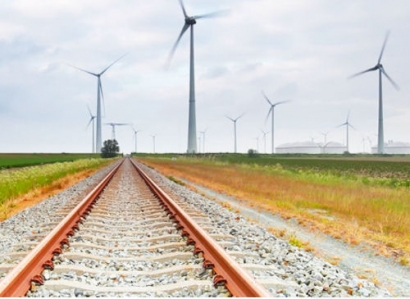
This projected energy cost savings is in addition to $9 billion of total economic investment in Kansas and Missouri that is associated with Grain Belt. This includes investment in the transmission line and associated new renewable energy generation, which will support thousands of jobs during construction, generate revenues for local governments and landowners, and expand rural broadband at a critical time for both states’ economies.
“Economic recovery and long-term economic competitiveness in Kansas and Missouri depend on new investment, more jobs, and tapping into low-cost, homegrown clean energy, which Grain Belt is moving full speed ahead to deliver,” said Kris Zadlo, SVP, Commercial Analytics, Regulatory Affairs and Transmission at Invenergy Transmission. “Grain Belt is proud to increase our investment in Kansas and Missouri to rebuild the economy, deliver billions of dollars in energy cost savings, and meet growing renewable energy demand.”
As the new owner of Grain Belt, Invenergy Transmission plans to increase the project’s delivery capacity to Kansas and Missouri to up to 2,500 MW of the line’s 4,000-MW capacity. This is equivalent to the energy usage of up to 2.4 million Kansans and Missourians and responds to growing local demand for clean energy. Previously, 500 MW of the transmission line’s capacity was slated for delivery to Missouri.
Grain Belt will provide critical power infrastructure to the region benefiting residents for decades to come. According to PA, in just its first 20 years of operation, delivery via Grain Belt of 2,500 MW of wind energy from western Kansas to eastern Kansas and Missouri would reduce electricity rates by approximately $7 billion. This represents an equivalent savings for the average residential customer of $50 per year and accounts for the full cost to build the project.
Building upon the unanimous regulatory approvals from Kansas and Missouri in 2019, Grain Belt Express will seek approvals to the extent necessary for expanded delivery to Kansas and Missouri as well as for beginning the first phase of project construction prior to Illinois regulatory approval. This will accelerate and enhance substantial economic development for Kansas and Missouri at a critical time for both states’ economies.
Harvesting Low-Cost Homegrown Wind Energy from Kansas
Energy savings created by Grain Belt result from the transmission line’s direct access to one of the country’s strongest and lowest-cost wind energy resources in western Kansas. These savings are in addition to $8 billion in estimated economic investment to build the transmission line and the new renewable energy generation that will enable electricity cost savings in eastern Kansas, throughout Missouri, and beyond.
“This impressive project is the latest example of Kansas’ place as a wind energy leader in our region and beyond,” Kansas Gov. Laura Kelly said. “The Grain Belt Express will be instrumental in helping to power Kansas and other states, and will have a significant economic impact here at home. My administration is committed to supporting investments that will continue to boost Kansas’ production and export of wind and other renewable energy.”
“Kansas had the vision many years ago to commit to wind energy, and the unwavering commitment from Governor Kelly to further support renewable sources is paying off in many ways, including this tremendous step forward in the Grain Belt Express,” Kansas Secretary of Commerce David Toland said.
Meeting Growing Demand for Renewable Energy in Missouri
With increased delivery to Missouri, including an expanded DC to AC converter station, Grain Belt will double its overall economic investment in Missouri to $1 billion. Many of Missouri’s largest companies, communities and energy suppliers have set clean energy goals, and Grain Belt will now make available as much as half or more of the project’s total capacity for Missourians. Grain Belt Express has already executed an agreement with the Missouri Joint Municipal Electric Utility Commission to serve 39 cities across the state. Large Missouri employers have also voiced support for Grain Belt.
“Demand for renewable energy is growing, and Grain Belt will help attract new corporate investment to Missouri, multiplying the economic impact of the line for decades to come,” said James Owen, executive director of Renew Missouri.
"Now is the time to move forward with any and all initiatives that provide rate relief to households that are struggling under this current economy,” said John Coffman, executive director of the Consumers Council of Missouri, which focuses primarily on protecting low-income utility consumers. “The Grain Belt project will allow cheaper alternatives of energy production to be made available, providing rate relief for all consumers."
Grain Belt Express is an approximately 800-mile high voltage direct current transmission line that will deliver up to 4,000 MW low-cost, homegrown clean energy from western Kansas to millions of Americans in the Midwest and other regions.

